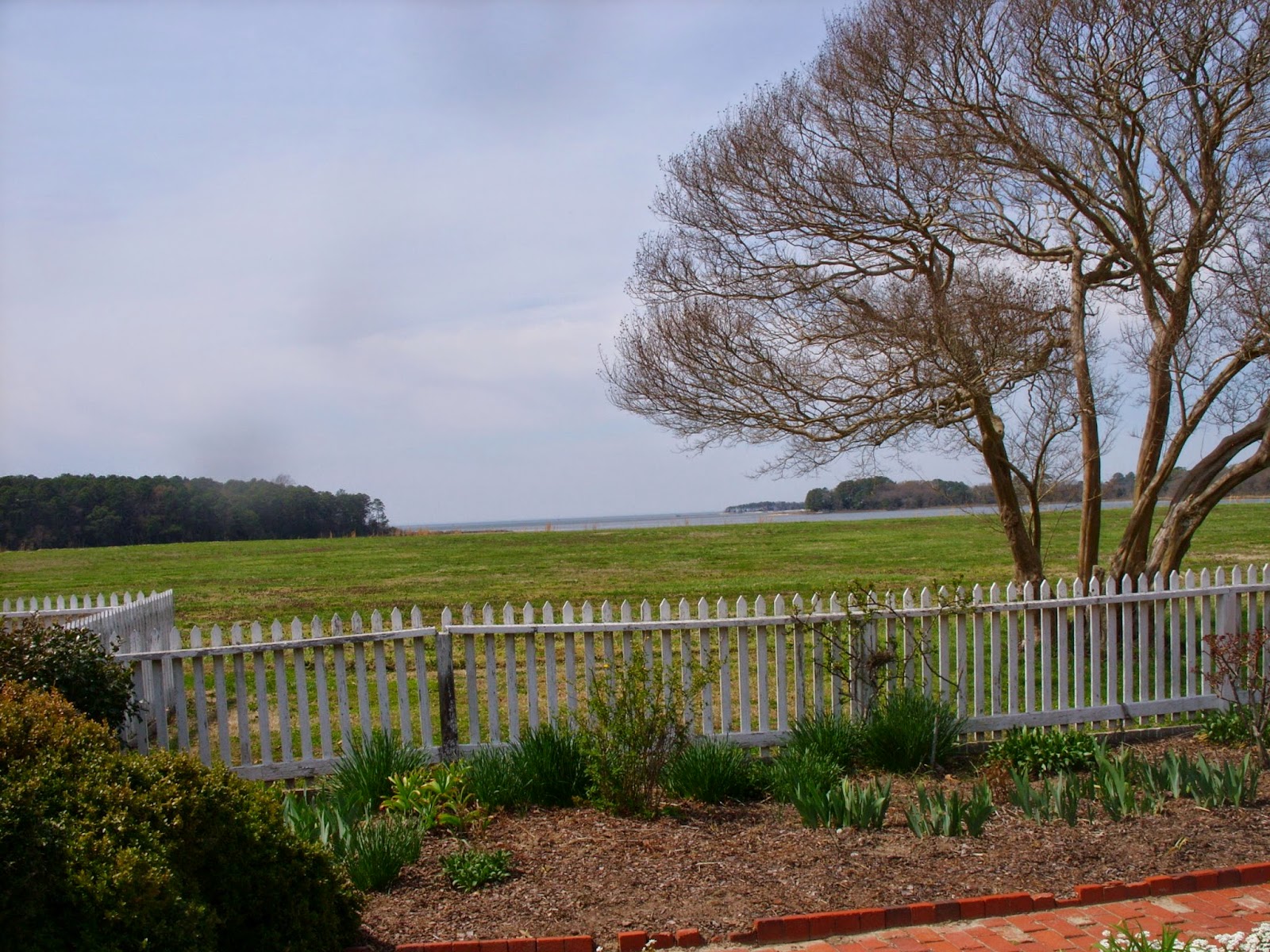Lenten Diary 10
Only
My Cats Were Missing
 |
| Here in the garden is where it hit me. |
It was the afternoon of the first full day on Buddhist retreat when I realized, in a wave of emotional connection with myself, that I wouldn’t mind leaving everything behind and just stay where I was indefinitely. It was as if everything of true value in my life was consolidated in that place at that time, including the first sustained, beautiful weather of the season after winter’s long, gloomy, chilly hangover. Only my two cats were missing. I’d have to go back for them.
The truth is, I am not, first and
foremost, an actor and writer, as I tell people when asked what I am, but a
spiritual person attempting to look deeply enough into myself and my relations
to find lasting and satisfying meaning in my life. That’s been true since I was
a teenager.
Coincidentally, the
formal theme of the spring retreat—sponsored by the Salt Marsh Sangha at Oak
Grove Plantation on Virginia Eastern
Shore —was Looking
Deeply.
(A sangha, for those who wonder, is
a community of people in solidarity with the practice of a mindful way of
living. The spring retreat included members of the Mindful Community of Hampton
Roads, whose twice-monthly meetings Jala and I frequently attend in Norfolk
As I wrote in an earlier Lenten
Diary post, I didn’t know if I was ready just then to break away from my busy
life and go on retreat. But I sensed that I needed to because I’d allowed too
much negativity over too long a time to capture my mind with insidious
tentacles until I was mildly but
consistently depressed. Not the least of that depression arose from chronic
pain left over from a broken hip, partially replaced in a surgery over three
years ago.
The doctors I saw offered little
comfort beside pills and possibly more surgery. I didn’t like either
alternative. Eventually I found I could continue day-to-day functioning with
the help of certain physical therapy exercises, yoga poses, ibuprofen on
occasion, staying off my feet as much as possible, and just plain gritting my
teeth. I’d learned to live with the pain, but increasingly I wanted to ditch
it. I just didn’t know where to turn. I sometimes wondered if my best
alternative was death.
At the retreat I didn’t miraculously
lose the pain. I continued to manage it, largely as I had been. But in that
environment, encouraged by a radical deceleration from the usual pace of modern life, I found myself experiencing
surges of extraordinary happiness—often to the point of tears—and it worked
like an anti-depressant, a pain pill, and a joint all at once, not eliminating
all pain but easing the stress in my body causing the pain.
 |
| View from the garden to the Chesapeake Bay. |
For instance, I was able to walk with little or no pain all over the plantation—a large and beautiful historic estate with a vista overlooking the Chesapeake Bay—so long as I maintained a pace known as walking meditation. This is part of the Buddhist practice taught by Thich Nhat Hanh, the noted Vietnamese monk whose take on the Buddha’s teachings have gained a large following in the West.
A walking meditation is a slow,
deliberate walk with maximum attention paid to the present moment—each step,
each breath, each sight and sound along the way—and minimum attention paid to
destination, even though you might have one.
It is mindfulness in motion rather
than seated with eyes closed, and it is a very useful tool in daily life,
especially mine.
Meanwhile, the retreat teacher,
Michael Ciborski, offered insights that turned my mind around concerning the
pain I experienced. Rather than trying to ignore, overcome, or, for that matter,
succumb to suffering, he suggested we should attend to it as a part of
ourselves crying out for our recognition, for acknowledgment, comfort, and
healing. We should embrace our suffering self and comfort it like a hurt child
rather than try to drive it away like an intruder invading our otherwise happy
lives. We should look deeply into it, asking it what it needs, what’s missing
for it, why it feels so damaged, and, taking it seriously, try to find ways to
accommodate it in its fright, anger, or frustration.
And I found it true, that there was
relief from pain if I adjusted my perspective to view my pain positively, helping me reorder my
priorities, centering my mind on my spiritual life, where I want it to be,
rather than on my participation in a seemingly mindless world of stress. The
pain gives me a real incentive to slow down, let go of stress, and fully
experience where I find myself—even if that condition contradicts my idea of
the self I think I should be.
 |
| Approaching the main house at Oak Grove Plantation. |
Of course, that was not so hard to do on a beautiful spring weekend among friends of like mind, old and new, in a gorgeous place remote from the stress of a collapsing civilization. There was no place I had to be, nothing I had to do, which demanded speed or even much accountability. It was like being on a structured vacation, like camp or the reunion of a clan.
The challenge would be to bring back
what I’d learned and apply it to the daily life which I’d allowed to stress me
out so much in the first place.
Perhaps I need to make some significant
changes to maintain the meditative lifestyle I experienced in such clear focus
on my Buddhist retreat.
TO BE
CONTINUED....


2 Comments:
Beautiful D.D.
My friend, this is stunning, beautiful, and revelatory. I shall try to find threads of it in my own present tangles. -- Elizabeth
Post a Comment
Subscribe to Post Comments [Atom]
<< Home